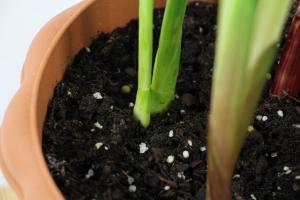How to Tell the Type of Tomato Plant
Tomatoes are a popular vegetable that come in different types depending on their size, taste, color, and shape. Determining the type of tomato plant can be a challenge, especially for beginners. However, by paying attention to certain characteristics of your plant, you can quickly identify the type of tomato plant you have. Here are some tips to help you tell the type of tomato plant.
Indeterminate vs. Determinate tomato plants
Tomato plants can be classified into two categories, indeterminate and determinate. Indeterminate tomato plants are vine-like, and grow continuously throughout the season, often reaching heights of up to 10 feet or more. They produce flowers and fruits at the same time, and require staking or caging for support. In contrast, determinate tomato plants are bushy and grow up to a certain height, usually 3-4 feet. They produce flowers and fruits at different times, and do not require support.
Tomato plant size and shape
Tomato plants come in different sizes and shapes. Some plants have small fruits, while others have large fruits. Indeterminate plants tend to have long, skinny leaves, while determinate plants have shorter, broader leaves. Cherry tomatoes are typically small and round, while beefsteak tomatoes are large and have a flat, circular shape. Determining the size and shape of your tomato plant can help you narrow down its type.
Tomato plant color and texture
The color and texture of tomato plants can be another clue to identifying their type. The leaves of most tomato plants are green, but can also be yellow or purple. Some plants have fuzzy or hairy leaves, while others have smooth leaves. The fruits can be red, yellow, orange, green, or even purple. The texture of the fruit can also vary, from smooth to rough. Determining the color and texture of your tomato plant can help you distinguish its type.
Tomato plant taste and use
The taste and use of the tomatoes can also help you identify the type of tomato plant. Some tomatoes are sweet and juicy, while others are acidic and tangy. Some tomatoes are best for salads, while others are good for slicing, canning, or making sauces. Determining the taste and use of your tomatoes can help you figure out the type of tomato plant you have.
Final thoughts
Identifying the type of tomato plant can be fun and rewarding. By paying attention to key characteristics such as plant size and shape, color and texture, and taste and use, you can determine the type of tomato plant you have. Whether you have an indeterminate or determinate plant, a small or large fruit, a red or purple fruit, a sweet or acidic fruit, all tomato plants require proper care, such as watering, fertilizing, and pruning, to maximize their yield and enjoy a bountiful harvest.

 how many times do yo...
how many times do yo... how many planted tre...
how many planted tre... how many pine trees ...
how many pine trees ... how many pecan trees...
how many pecan trees... how many plants comp...
how many plants comp... how many plants can ...
how many plants can ... how many plants and ...
how many plants and ... how many pepper plan...
how many pepper plan...

































